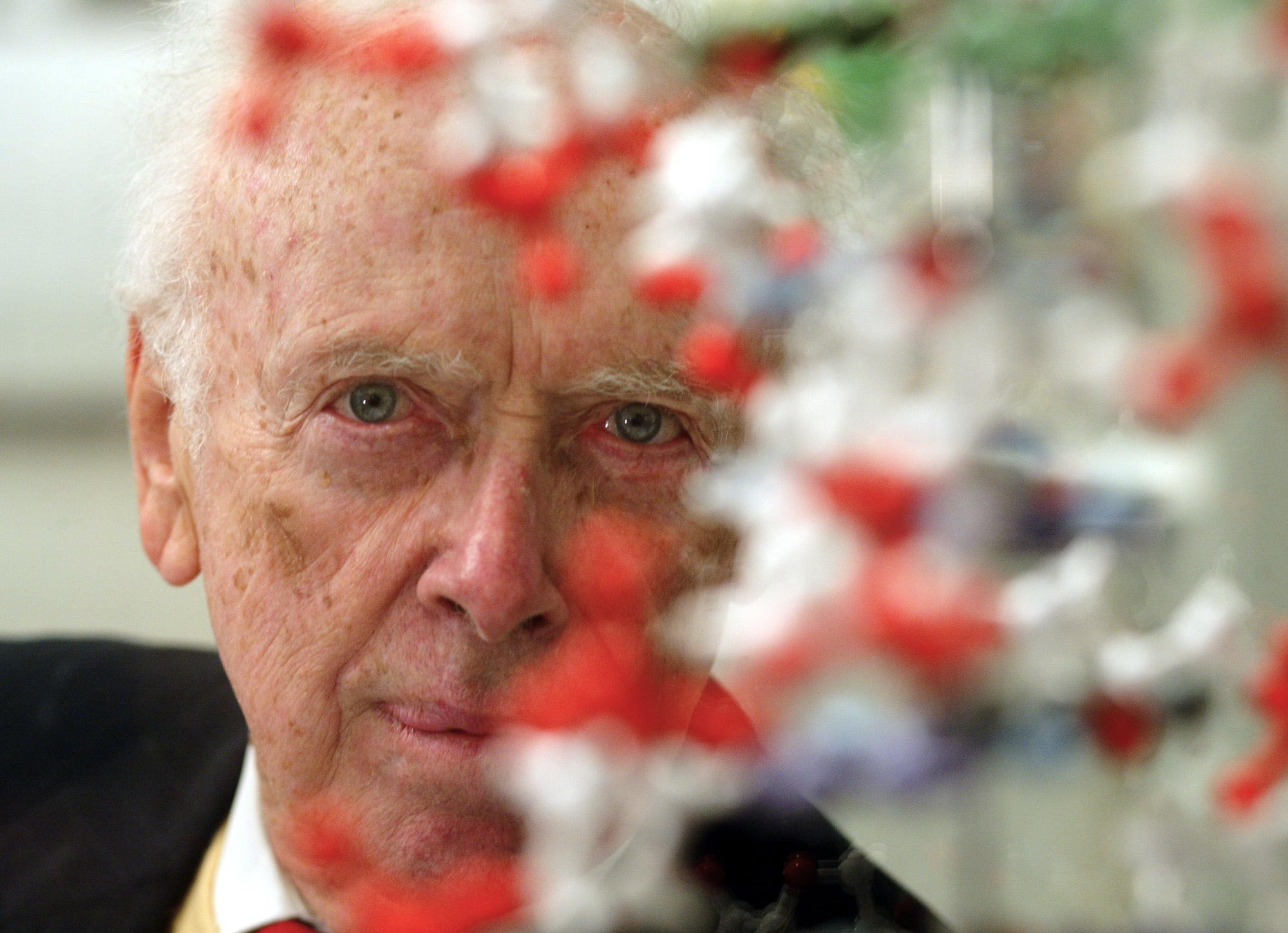Science
James Watson, Co-Discoverer of DNA Structure, Passes Away at 97

James D. Watson, renowned for co-discovering the structure of DNA, has died at the age of 97. Watson, whose pivotal work in 1953 unveiled the double helix structure of deoxyribonucleic acid, profoundly influenced fields such as medicine, forensics, and genealogy. His groundbreaking discovery occurred when he was just 24 years old, establishing him as a key figure in the scientific community for decades.
Watson, along with his colleagues Francis Crick and Maurice Wilkins, received the Nobel Prize in 1962 for their work on DNA’s structure. This discovery revealed how genetic information is stored and replicated in living organisms, a concept that would become foundational to modern biology. The double helix, resembling a twisted ladder, has since become an enduring symbol of scientific progress, appearing in art and popular culture.
The implications of Watson’s work extend far beyond theoretical science. His discovery paved the way for advancements in gene therapy, forensic DNA analysis, and genealogical research. Yet, it also raised complex ethical questions regarding genetic manipulation and the potential consequences of altering the human genome.
Controversial Legacy
Despite his scientific achievements, Watson’s later years were marred by controversy. In 2007, he made headlines for offensive remarks regarding race, suggesting that intelligence levels differ among racial groups. These comments led to widespread condemnation and ultimately resulted in his suspension from the prestigious Cold Spring Harbor Laboratory, where he had served for nearly four decades. He later stated he had not changed his views, prompting the lab to revoke several honorary titles.
Watson’s legacy is a complicated one. While he made significant contributions to science, his inflammatory comments have overshadowed much of his work. Dr. Francis Collins, former director of the National Institutes of Health, characterized Watson’s remarks as “profoundly misguided and deeply hurtful.”
As a scientist, Watson was known for his directness and lack of concern for political correctness. In his bestselling memoir, The Double Helix, he expressed disdain for what he viewed as the narrow-mindedness of some in the scientific community. He believed that to succeed in science, one must be willing to confront difficult truths, even if they provoke controversy.
Early Life and Scientific Journey
Born on April 6, 1928, in Chicago, Watson displayed an early fascination with nature and science. He began his academic journey at the University of Chicago at just 15 years old and later earned a doctorate in zoology. His interest in genetics was sparked when he read about the significance of genes, leading him to pursue studies in biochemistry in Europe.
Watson’s collaboration with Crick began in 1951 at Cambridge University, where they quickly formed a strong intellectual partnership. Their research was bolstered by the X-ray diffraction studies conducted by Rosalind Franklin, whose contributions were not fully recognized during her lifetime. Watson’s eventual realization of how the DNA structure could form a double helix was described as a moment of beauty and clarity.
Following the discovery, Watson continued to shape the field of molecular biology. He held various positions, including director of Cold Spring Harbor Laboratory and played a significant role in the Human Genome Project, which aimed to map the entire human genetic code. His leadership turned the laboratory into a vital center for research and education.
Watson’s work has left an indelible mark on science. His findings have influenced numerous fields, from genetics to medicine. Despite the controversies that marred his later years, his contributions to our understanding of DNA and genetics remain significant.
Watson’s passing marks the end of an era in molecular biology. His son announced that he died in hospice care after a brief illness, with confirmation of his death coming from his former research lab. In reflecting on his father’s legacy, Duncan Watson stated, “He never stopped fighting for people who were suffering from disease.”
As the scientific community remembers Watson, his dual legacy as a pioneer in genetics and a figure of controversy presents a complex narrative that will continue to be examined in the years to come.
-

 Science4 weeks ago
Science4 weeks agoIROS 2025 to Showcase Cutting-Edge Robotics Innovations in China
-

 Lifestyle4 weeks ago
Lifestyle4 weeks agoStone Island’s Logo Worn by Extremists Sparks Brand Dilemma
-

 Politics3 weeks ago
Politics3 weeks agoJudge Considers Dismissal of Chelsea Housing Case Citing AI Flaws
-

 World4 weeks ago
World4 weeks agoBravo Company Veterans Honored with Bronze Medals After 56 Years
-

 Health4 weeks ago
Health4 weeks agoStartup Liberate Bio Secures $31 Million for Next-Gen Therapies
-

 Science4 weeks ago
Science4 weeks agoArizona State University Transforms Programming Education Approach
-

 Health4 weeks ago
Health4 weeks agoTop Hyaluronic Acid Serums for Radiant Skin in 2025
-

 Top Stories4 weeks ago
Top Stories4 weeks agoIndonesia Suspends 27,000 Bank Accounts in Online Gambling Crackdown
-

 Sports4 weeks ago
Sports4 weeks agoMel Kiper Jr. Reveals Top 25 Prospects for 2026 NFL Draft
-

 Lifestyle4 weeks ago
Lifestyle4 weeks agoMary Morgan Jackson Crowned Little Miss National Peanut Festival 2025
-

 World4 weeks ago
World4 weeks agoHoneywell Predicts Record Demand for Business Jets Over Next Decade
-

 Sports4 weeks ago
Sports4 weeks agoYamamoto’s Mastery Leads Dodgers to 5-1 Victory in NLCS Game 2









